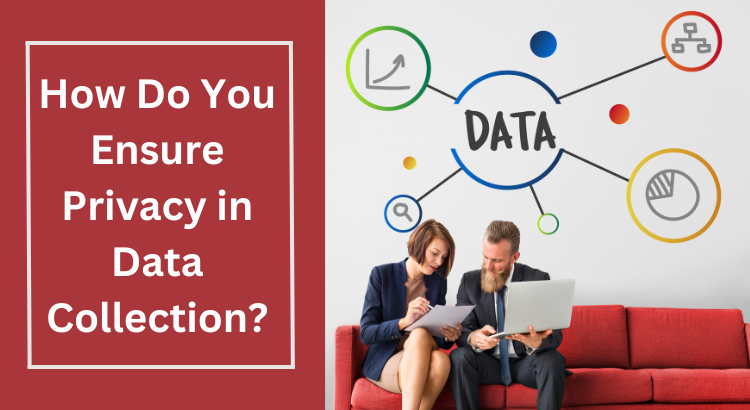Typically, privacy is something that nobody wants to be invaded. When it comes to data, privacy becomes more crucial. Businesses collect precious data about their potential and existing customers through various methods like cold calling, digital marketing, and data extraction. They know how crucial customer data is. So, they would never like to compromise on it. Though malpractices or malicious cyber crimes are at their peak, it is a must to protect sensitive records that may be customer reviews, market research information, or anything related to the market or customers.
Understanding the Importance of Privacy in Data Collection
Privacy refers to properly handling, processing, and saving personal information securely. It helps in protecting individuals’s rights because every single person’s records are precious. People are now more aware of their rights, like the General Data Protection Regulation (GDPR) in Europe and the California Consumer Privacy Act (CCPA) in the United States. Non-compliance with these or any other country-specific privacy regulations can result in severe penalties and reputational damage to a company.
In this regard, Cisco revealed that 84% of consumers seriously care that their data remains private. And 48% of consumers change their companies because of this privacy concern. These facts show how critical it is to maintain customers’s trust.
Key Strategies to Ensure Privacy in Data Collection
Let’s share some proven ways to ensure the privacy of our data.
Implement Data Minimisation Principles
According to a survey report, the International Association of Privacy Professionals (IAPP) reported that 65% of companies have embraced the minimisation method to secure the privacy of their data.
Minimisation is actually the smart practice of collecting a minimal amount of personal information. This minimum collection consists of only those details that resonate with the desired objectives. Many big companies and people follow the minimisation principle while gathering data to serve a commercial purpose. This practice minimizes the risk of break-ins because the least amount of datasets is available. It ensures compliance with privacy regulations.
Use Anonymisation and Pseudonymization
The next strategy goes with anonymisation and pseudonymization. Technically, anonymisation refers to the technical practice of either removing or changing sensitive data, especially personally identifiable information (PII), from the database. This practice makes it impossible for hackers to identify the sensitive records of real-life users.
On the flip side, pseudonymization ensures PII is replaced with codes (anonymous codes). This technical hack hampers hacking attempts as they find it challenging to re-identify them conveniently.
Both of these strategies or privacy techniques prove helpful in preventing malicious attempts. Gartner foresees that 60% of organisations will adopt anonymisation or pseudonymization methods by 2025 for maintaining the privacy.
Ensure Transparency and Informed Consent
A PwC survey digs out the fact that 85% of consumers intend that companies would maintain transparent policies related to data gathering and its use.
Maintaining transparency is necessary to build trust with customers. Organisations must be very clear about how to collect, use, and secure datasets. Users or customers’ consent is important during data collection. It should be prioritised so that they remain aware of and agree to the terms of use by the company.
Employ Strong Data Encryption Methods
Encryption is another popular method to significantly prevent hacking or malicious attempts. It is like an agile privacy tool that can convert data into a coded format. This way, sensitive information can be locked. It cannot be accessed unless it is unlocked with the decryption key. This is the smartest approach to keeping sensitive data like financial information or health records under cover.
The Ponemon Institute’s 2020 Global Encryption Trends Study shows that 45% of companies have embraced encryption strategies. This widespread adoption highlights the growing significance of encryption for data protection.
Conduct Regular Privacy Audits and Assessments
The International Association of Privacy Professionals (IAPP) reports that 72% of organisations audit privacy arrangements to ensure compliance and protection of customer data.
Regulating privacy audits and analyses reveals potential threats to sensitive data. So, the collected records can be maintained safely by evaluating compliance with privacy regulations from time to time. Also, internal policies need reviews, which must be done to find gaps and fix them with immediate effect.
Implement Access Controls and Data Segmentation
A study by IBM Security reported that 60% of data infringements occur due to internal reasons, which creates an urgent need for robust access controls.
Defining access limits can be helpful to paralyse internal factors that may cause break-ins. This control must be related to who can view and handle the collected data. So, the moral of the story is that only authorised personnel should have access to sensitive information. For this purpose, organisations need to execute data segmentation properly by splitting data into different categories. These categories should be defined according to the sensitivity of the data. The more sensitive the records are, the more stringent access controls will be there. It helps in safeguarding the collected records with caution.
Stay Compliant With Data Privacy Regulations
If you look into the penalties since the implementation of the GDPR, fines worth a whopping €300 million have been levied. This practice highlights how important compliance is when you’re in the data collection services or business.
However, complying with data privacy regulations is not legally imposed. But it has emerged as the best practice to secure sensitive customer records. So, organisations must be informed about relevant privacy regulations, especially those related to data like GDPR or CCPA, so that the best practices can be put in place.
Educate Employees On Data Privacy
The SysAdmin, Audit, Network, and Security (SANS) has discovered that 80% of breaches indicate a human element. This surprising revelation emphasizes that employees must be aware of critical data privacy elements. They must be educated about it.
In essence, employees play a key role when it comes to maintaining strict data privacy. Regular training should be organised regarding what the best privacy practices are, how to handle data and its flow securely, and how confidentiality can be maintained. This kind of education can significantly fill the gaps that invite cyberspies to attack and steal valuable information.
Conclusion
Data is sensitive. It is a regulatory requirement that is crucial to winning customers’s trust. However, multiple security practices are popular to secure gathered data, such as data minimisation, anonymisation, encryption, transparency, access controls, and regular audits. These data protection and privacy practices can help enhance customer belief that the company cares about customers and their sensitive details.



